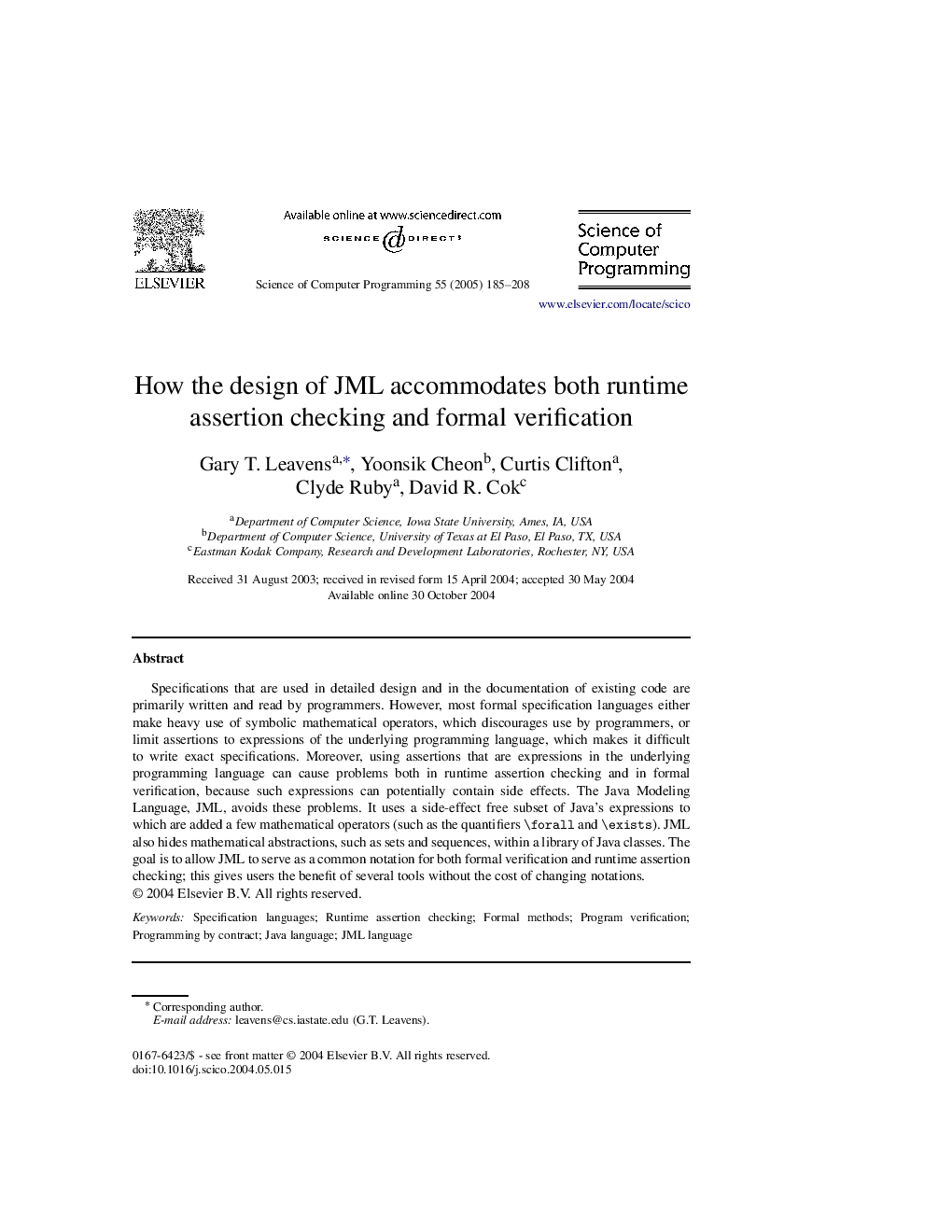| Article ID | Journal | Published Year | Pages | File Type |
|---|---|---|---|---|
| 9657464 | Science of Computer Programming | 2005 | 24 Pages |
Abstract
Specifications that are used in detailed design and in the documentation of existing code are primarily written and read by programmers. However, most formal specification languages either make heavy use of symbolic mathematical operators, which discourages use by programmers, or limit assertions to expressions of the underlying programming language, which makes it difficult to write exact specifications. Moreover, using assertions that are expressions in the underlying programming language can cause problems both in runtime assertion checking and in formal verification, because such expressions can potentially contain side effects. The Java Modeling Language, JML, avoids these problems. It uses a side-effect free subset of Java's expressions to which are added a few mathematical operators (such as the quantifiers ⧹forall and ⧹exists). JML also hides mathematical abstractions, such as sets and sequences, within a library of Java classes. The goal is to allow JML to serve as a common notation for both formal verification and runtime assertion checking; this gives users the benefit of several tools without the cost of changing notations.
Related Topics
Physical Sciences and Engineering
Computer Science
Computational Theory and Mathematics
Authors
Gary T. Leavens, Yoonsik Cheon, Curtis Clifton, Clyde Ruby, David R. Cok,
